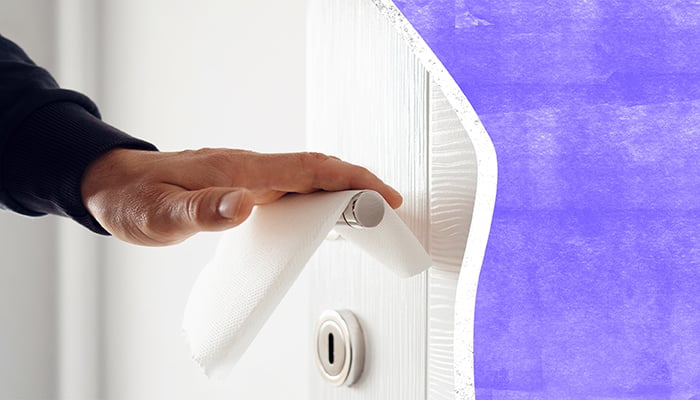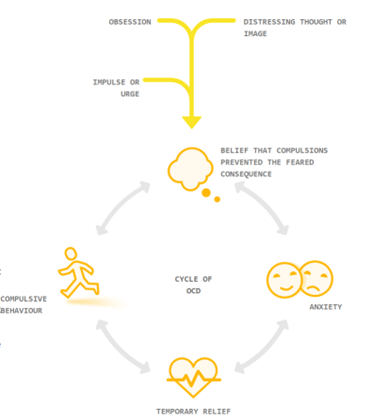 October 9th-15th is International OCD Awareness Week and is an opportunity to learn more about OCD. Obsessive-compulsive disorder (OCD) affects approximately 2% of the worldwide population1. It can occur in all age groups (e.g., children, adolescents, and adults). Most people receive a diagnosis by age nineteen, less frequently onset is after the age of thirty-five2.
October 9th-15th is International OCD Awareness Week and is an opportunity to learn more about OCD. Obsessive-compulsive disorder (OCD) affects approximately 2% of the worldwide population1. It can occur in all age groups (e.g., children, adolescents, and adults). Most people receive a diagnosis by age nineteen, less frequently onset is after the age of thirty-five2.
Washing hands constantly, colour coding, fixing something that is misaligned. These are some examples of how society can portray individuals who live with OCD. ‘Being a bit OCD’ can be used as a description of liking or needing order. Yet, this trend of using OCD as an adjective for a person (e.g., organised) is problematic.
What is OCD?
Most people will not believe they need to check the door lock five times because if they don’t their dog will die. But for people with OCD, there is a strong sense of needing to do things to prevent bad things from happening. Even a small possibility can make them overwhelmed with anxiety and stress. A person suffering from OCD is often aware that their thought process is illogical. However, the intrusive thoughts and anxiety caused by these are so strong that it is very challenging to try to resist the urge to do things to stop bad things from happening and therefore ease their mind.
The American Psychiatric Association defines OCD3 as “a disorder in which people have recurring, unwanted thoughts, ideas or sensations (obsessions) that make them feel driven to do something repetitively (compulsions).” A person will have intrusive thoughts (e.g., my dog will die) that causes them urges to perform a specific action (e.g., check their front door is locked three times). They believe these actions will prevent their feared outcome from happening (e.g., if I check my door is locked my dog will not die). These thoughts/beliefs are recurrent and persistent throughout the day. This means they are hard to escape/ignore. To ease their anxiety, a person will repeat behaviours (e.g., will keep checking the door is locked because if it is not their dog will die). However, engaging in the compulsions brings no pleasure and may offer only temporary relief from anxiety.

The problem with carrying out compulsive behaviours to ease anxiety is that by doing so, individuals don’t get an opportunity to see what would happen if they don’t do anything. The fear is often too strong to be able to hold back. To give a diagnosis, a person’s thoughts and behaviours need to be time-consuming. They need to be distressing (i.e., stress/anxiety). Furthermore, it needs to affect their daily functioning (e.g., family, friends, work)4.
Why is throwing around the term OCD problematic?
OCD is a serious and debilitating disorder. Overusing the term in everyday life can have the effect of trivialising what is a source of distress and impairment to sufferers. We all have habits, if we like to have a clean kitchen or enjoy the aesthetic of colour coding, it does not mean we have OCD. Instead of describing your behaviour as “I’m so OCD,” an alternative may be “I love how this looks; I like when things are in order”. This lets you describe a part of you without downplaying the suffering people are going through with OCD.
SilverCloud has designed the Space from OCD programme to support individuals experiencing symptoms of OCD by:
- Focusing on developing more flexible ways of thinking
- Increasing awareness and understanding of emotions
- Increasing awareness and understanding of obsessions and compulsions
The programme is accessible 24/7. Allowing users to access the programme at a time that suits them and in the comfort of their own home.
References
1. Sasson, Y., Zohar, J., Chopra, M., Lustig, M., Iancu, I., & Hendler, T. (1997). Epidemiology of obsessive-compulsive disorder: a world view. Journal of Clinical Psychiatry, 58(12), 7-10.
2. U.S. Department of Health and Human Services. (n.d.). Obsessive-compulsive disorder. National Institute of Mental Health. Retrieved September 30, 2022, from https://www.nimh.nih.gov/health/topics/obsessive-compulsive-disorder-ocd
3. American Psychiatric Association. (2013). Diagnostic and statistical manual of mental disorders (DSM-5®). American Psychiatric Pub.
4. Stein, D. J., Costa, D. L., Lochner, C., Miguel, E. C., Reddy, Y. C., Shavitt, R. G., ... & Simpson, H. B. (2019). Obsessive–compulsive disorder. Nature reviews Disease primers, 5(1), 1-21.







